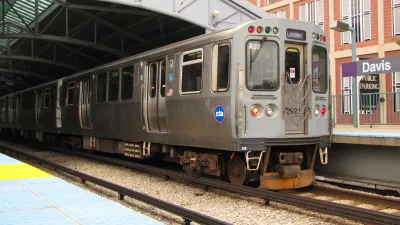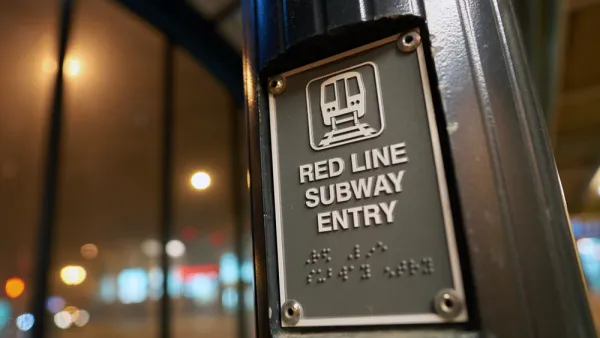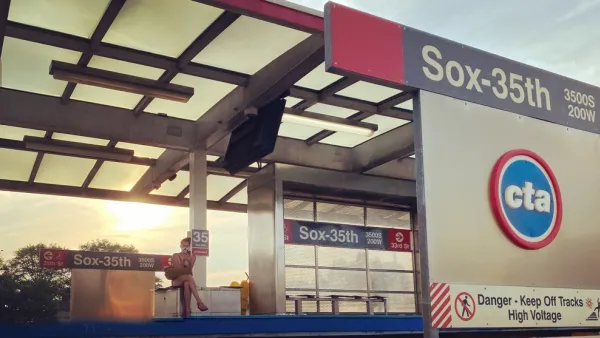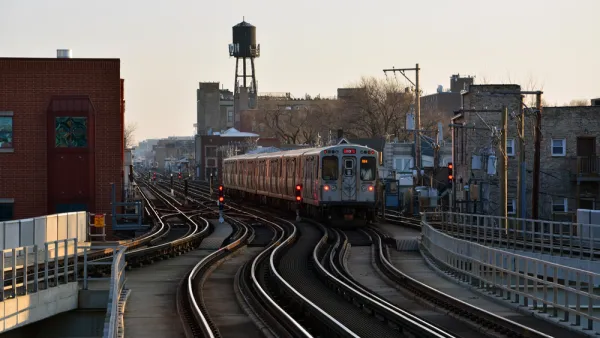The Chicago Tribune supports the use of tax increment financing to fund a $2.1 billion project to revamp the Red and Purple lines on the CTA system in Chicago.

Capital investment is an expensive proposition for transit systems in the United States, and the Chicago Transit Authority is no different. The city recently broke ground on its largest ever transit project, a $2.1 effort to modernize the Red and Purple lines.
The Chicago Tribune Editorial Board weighs in on the project, praising the city for investing in public transit "in an era when many people are inclined to look to their Uber or Lyft apps for a ride."
Also earning plaudits from the Editorial Board is the city's use of tax increment financing (TIF) to help fund the project.
In 2016, City Hall endorsed the use of tax increment financing to help fund the project. It marked the city’s first use of TIF dollars to finance transit needs. Under a TIF, a project is paid for using the incremental tax dollars generated by rising property values on the surrounding land. In this case, that land is a 6-mile long, mile-wide corridor from Devon Avenue in Rogers Park to North Avenue in Lincoln Park.
Despite the skepticism among Chicago residents about TIF ("and for good reason," according to the Editorial Board), the editorial makes a case that TIF is the right tool for the right job in the case of the Red and Purple Line modernization project.
FULL STORY: Editorial: Using TIF money for the CTA Red-Purple Line rebuild is the right way to go

National Parks Layoffs Will Cause Communities to Lose Billions
Thousands of essential park workers were laid off this week, just before the busy spring break season.

Retro-silient?: America’s First “Eco-burb,” The Woodlands Turns 50
A master-planned community north of Houston offers lessons on green infrastructure and resilient design, but falls short of its founder’s lofty affordability and walkability goals.

Delivering for America Plan Will Downgrade Mail Service in at Least 49.5 Percent of Zip Codes
Republican and Democrat lawmakers criticize the plan for its disproportionate negative impact on rural communities.

Test News Post 1
This is a summary

Test News Headline 46
Test for the image on the front page.

Balancing Bombs and Butterflies: How the National Guard Protects a Rare Species
The National Guard at Fort Indiantown Gap uses GIS technology and land management strategies to balance military training with conservation efforts, ensuring the survival of the rare eastern regal fritillary butterfly.
Urban Design for Planners 1: Software Tools
This six-course series explores essential urban design concepts using open source software and equips planners with the tools they need to participate fully in the urban design process.
Planning for Universal Design
Learn the tools for implementing Universal Design in planning regulations.
EMC Planning Group, Inc.
Planetizen
Planetizen
Mpact (formerly Rail~Volution)
Great Falls Development Authority, Inc.
HUDs Office of Policy Development and Research
NYU Wagner Graduate School of Public Service





























